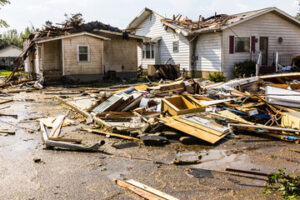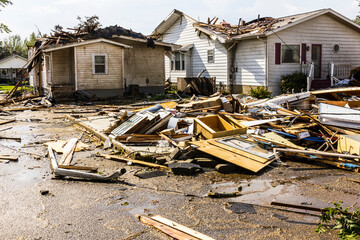Disasters like floods, fires, tornadoes, hurricanes, and mudslides cause a lot of damage. Cleanup is a huge task and can be dangerous if not done properly.
Before starting anyDisaster Cleanup make sure everyone involved is safe and has evacuated to a safer location. Then, take plenty of photos of the damage.
Disasters caused by water can be a significant cause of property damage. This can be anything from a hurricane, flooding, tornadoes, earthquakes, mudslides, or a burst pipe. Flooding can also destroy buildings, cars, and other objects as well as contaminate food and water supplies. It’s important to have a plan in place to mitigate water damage after a natural disaster strikes.
Identify the source of water infiltration as soon as possible. This is especially important if you are trying to claim insurance coverage for repairs or rebuilding. Once you know the origin, you can take the proper steps to prevent further damage and make repairs.
Once the source of the water infiltration has been identified, it is important to drain all standing water from affected areas and clean up any materials that may be contaminated by water or sewage. This can include drywall, carpets, insulation and furniture. You should also dispose of any items that are beyond salvageable, including spoiled or moldy food.
Water cleanup after a disaster can be messy and tedious. It’s important to have the right cleaning supplies and equipment for the job. Having the right tools makes the process much faster and easier. You should always wear rubber gloves when handling any potentially contaminated materials.
It’s also important to use caution when working around any electrical appliances or devices that are plugged into an outlet that has come into contact with water or sewage. This can be dangerous, especially if the power is turned on.
It is also a good idea to wear protective clothing and eyewear when working in these hazardous conditions. If you’re working in a large group, it’s also important to work together and keep an eye on one another so no one gets injured.
Fire Damage
Fire damage is one of the most serious types of disaster damage. A fire can destroy personal property, cause structural damage and lead to the destruction of electrical systems. The fire can also create dangerous fumes and toxins that will affect the health of people. It is essential that the fire damage restoration process begins as soon as possible after a fire breaks out. This will prevent the damage from spreading to other areas of the building.
Whether the cause of fire is natural or man-made, it can have devastating effects on a property. It can leave behind a great deal of debris, ashes and smoke damage. The cleanup process is very time consuming and labor intensive. Fire damage clean up is a job that should be left to professionals who have the right equipment and knowledge to get the job done quickly and correctly.
If you have been displaced during a disaster, the first thing you should do is evacuate your home or business to a safe location. Then, you can begin the process of disaster clean up by locating salvageable items and assessing any structural damage caused by the disaster. It is important to take note of the damage and make a list to save for the insurance company. It is also a good idea to save receipts for any disaster clean up expenses.
Disasters are unpredictable, and there is no set method for cleaning up after a disaster occurs. Depending on the type of disaster, workers are exposed to various hazards including contaminated water, carbon monoxide, fallen power lines, mold, tree-trimming, electricity, saws, ladders, vehicles and hazardous materials. The work can be stressful and traumatic, but the proper precautions can help minimize risk and ensure safety. It is also important for disaster cleanup workers to seek emotional support and physical wellness. This can be done through family, friends and professional counseling services. It is also important to eat properly and stay hydrated. It is also recommended that workers wear protective clothing, use dust masks and take frequent breaks. Taking a break helps reduce fatigue and stress levels, which can increase the risk of injury.
Mold Damage
Mold growth in a home caused by a disaster may require a major clean-up and some structural repairs. Mold feeds on organic materials, including wood, paper, many fabrics and glue, causing them to break down or rot. It can also eat away at wallboards, ceiling tiles and floorboards. Left unchecked, it can cause severe structural damage to a building, leading to collapse of ceilings and caving in of floorboards.
Mold spores float through the air and can cause respiratory problems, especially for infants, children, older adults and people with breathing conditions such as asthma or weakened immune systems. They can also irritate the skin and eyes.
To prevent mold spores from spreading, it is best to isolate the area where you are working. This can be done by closing off the moldy area with plastic sheeting, putting a cover over air vents, taping plastic over window openings and drape-ing plastic in stairwells (if other levels are clean and dry). It is also helpful to open windows during clean-up and to use a box fan in a flooded room to blow spores outdoors.
If you are cleaning up a large area, it is important to wear protective equipment, which should include goggles or masks with filter, waterproof gloves and long pants. In addition, you should use a non-ammonia cleaner or commercial mold disinfectant (such as one that is registered with the Environmental Protection Agency for use in flood-affected buildings). Mix 1 cup of bleach per gallon of water and apply with a sponge, mop or sprayer bottle. Rinse and collect excess cleaning solution.
Mold growth can often be hidden behind wallpaper, carpeting and other items, so it is important to search every surface in the affected rooms of your home or business for signs of a problem. Look for staining, a musty smell, condensation problems and signs of moisture buildup on walls and ceilings. You should also check for hidden areas of a room, such as crawl spaces or behind walls. Sometimes a destructive technique is required to inspect and clean enclosed areas, such as opening up a wall cavity.
Smoke Damage
While the effects of fire damage are often readily apparent, many property owners do not realize that smoke damage can be just as harmful. Smoke damage is not limited to the black soot and discoloration that is normally associated with fire, as it can also negatively impact the structural integrity and stability of a building and its contents.
It is not uncommon to experience both fire and smoke damage in a single disaster, especially in cases where the fire is very intense or quickly spread through the structure. This combination of fire and smoke damage can be difficult to clean up, as it can contaminate and destroy both the surface of hard surfaces and the contents of soft goods. In many cases, a complete restoration process is required to return items to their pre-fire condition.
Even if no visible signs of smoke damage are present, a strong smoky odor may indicate that there is smoke residue inside the home. If not addressed promptly, it can lead to serious and expensive problems down the line, including corrosion of metal items and the deterioration of fabrics and synthetics.
If you suspect that your home has suffered from smoke damage, contact a professional immediately for help with the cleanup process. Although homeowners can clean small areas of the house, it is best to leave this task to professionals in order to minimize the potential for contamination and to avoid further damage to materials and possessions.
Dry Smoke
This type of smoke is produced when smoldering, low-heat flames burn plastic products and rubber. This type of smoke has a powdery consistency and gives off a distinct smell that can be particularly difficult to eliminate. Dry smoke can also cause corrosive acidic byproducts to form on metal objects and surfaces.
Wet Smoke
While this type of smoke has a sticky consistency, it is not as thick as the powdery residue from dry smoke. Wet smoke is usually the result of a very low-level fire and can cause severe damage to wood and paper surfaces, as well as rust metal items. In most cases, the best way to remove a strong smoky stench is to simply wash all surfaces with hot soapy water or trisodium phosphate (TSP).
